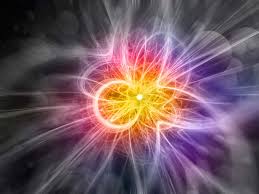
Breaking News
 Dr. Ron Paul interview with Meditation Magazine
Dr. Ron Paul interview with Meditation Magazine
 Tuesday War Room LIVE: Tune In For LIVE Election Day Coverage, As New York City Poised...
Tuesday War Room LIVE: Tune In For LIVE Election Day Coverage, As New York City Poised...
 Slowing climate change by using aerosols to block sunlight? Maybe not such a good idea
Slowing climate change by using aerosols to block sunlight? Maybe not such a good idea
 Las Vegas Cybertruck bomber's classified confession: Mystery as police suppress key details...
Las Vegas Cybertruck bomber's classified confession: Mystery as police suppress key details...
Top Tech News
 Japan just injected artificial blood into a human. No blood type needed. No refrigeration.
Japan just injected artificial blood into a human. No blood type needed. No refrigeration.
 The 6 Best LLM Tools To Run Models Locally
The 6 Best LLM Tools To Run Models Locally
 Testing My First Sodium-Ion Solar Battery
Testing My First Sodium-Ion Solar Battery
 A man once paralyzed from the waist down now stands on his own, not with machines or wires,...
A man once paralyzed from the waist down now stands on his own, not with machines or wires,...
 Review: Thumb-sized thermal camera turns your phone into a smart tool
Review: Thumb-sized thermal camera turns your phone into a smart tool
 Army To Bring Nuclear Microreactors To Its Bases By 2028
Army To Bring Nuclear Microreactors To Its Bases By 2028
 Nissan Says It's On Track For Solid-State Batteries That Double EV Range By 2028
Nissan Says It's On Track For Solid-State Batteries That Double EV Range By 2028
 Carbon based computers that run on iron
Carbon based computers that run on iron
 Russia flies strategic cruise missile propelled by a nuclear engine
Russia flies strategic cruise missile propelled by a nuclear engine
 100% Free AC & Heat from SOLAR! Airspool Mini Split AC from Santan Solar | Unboxing & Install
100% Free AC & Heat from SOLAR! Airspool Mini Split AC from Santan Solar | Unboxing & Install
Physicists discover that 'impossible' particles could actually be real

A group of fundamental particles, long theorised but thought to be physically impossible, might exist after all. Known as paraparticles, they could one day have exotic applications if we ever manage to detect them.
Paraparticles aren't a new idea, but physicists have previously dismissed them as having no relevance to physical reality. The concept has its origin in a division between the known fundamental particles that are always classified as belonging to one of two groups, either a fermion or a boson.



